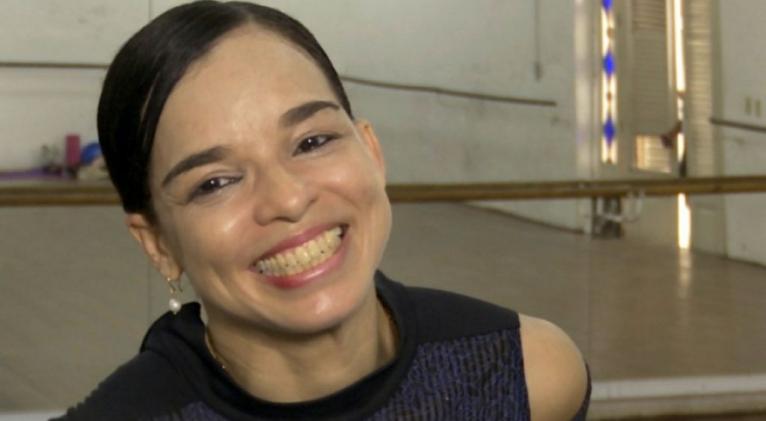Viengsay Valdés: “I still have much to dance”
especiales

The director of the Cuban National Ballet bets on dancers who can take on a wide range of styles and languages. She granted us an interview.
In one of the halls of the National Ballet of Cuba, prima ballerina Viengsay Valdés rehearses with Dany Hernández one of the most challenging pieces within the historical repertoire of the company: Tema y variaciones. It is George Balanchine’s choreography, which was created for Alicia Alonso in 1947. It is being said that the celebrated choreographer made it difficult for her as sessions were basically a battlefield. Challenge after challenge, the piece was staged.
Viengsay Valdés, everyone knows, never takes rehearsals lightly. “Not to mention this one, which was meant for Alicia. It is challenging to trying to be on her shoes. I got to do it right.”
The truth is that Viengsay Valdés is no longer one of the leading stars in the cast, but she is now the general director. Hence, she has no much time to spare. Therefore, she granted us this interview on a short break.
—After your appointment, the support of the government, cultural institutions, artists, and public in general has been awesome. Recently, you were congratulated by Raúl Castro himself…
—He saw me dancing several times and the fact he congratulated me, on the basis of mutual respect and admiration — knowing it was me the chosen one — has been certainly a pleasant surprise and, above all, a commitment.
—You have stated that such commitment is based on continuity, but also on renewal as ballet is not an art museum.
—Continuity, of course, implies the respect for a historical legacy. But it is not alienated from renewal, evolution, the upgrade of the Cuban ballet.
“I believe there is no need to lose our essence, roots, in order to contribute with our company, its repertoire, the daily work in the halls as well as the final result on stage. Much remains to be done.
“Since my appointment as deputy artistic director, I was pretty clear. And I am very clear now that I am in charge. It is my way to brewing a change from the inside, which is paramount from my personal view.
“Dancers need versatility. It is essential to develop not only the great classic pieces in the repertoire, which is actually what we have been doing so far. We also need dancers with certain degree of skills, a wide range of styles, that may lead them to perform with any choreographer, any language.
“This is vital. We cannot be labeled as a company that only focused on dance. We need to be a comprehensive dance company by boasting an international signature.
“A signature, of course, to make the company stand out. This is not about encouraging individualism. But you need to see diversity in styles and expressions.
“That is my goal with dancers. That is the way to finish off the artistic and technical development of them all.”
—There is a tradition of dancers who have led companies while still dancing. Alicia herself did it for a while. To what extent is it a challenge for you?
—I can confirm it is tough. Nobody can imagine my daily routine. I devote my morning to the physical side, my training, improve my technique…classes, rehearsals. In short, my constant improvement as a dancer.
“But it is totally the opposite in the afternoon: I have to address the administrative part. A lot of things; for instance, the schedule — especially now that we are organizing the International Ballet Festival, dedicated to Alicia in her centennial anniversary.
“There are many things at once. A lot of details come up along the way. My days are now longer. I sometimes start at 8:00 and I am still here at 19:00. Twelve hours working hard. It is exhausting, as a matter of fact. Luckily, I may de-stress the following day while dancing. Dancing is always cathartic.”
—In other words, you have no plans to stop dancing…
—I think I am experiencing one of the best times of my life, my career, and I will take the most advantage out of it as dancers’ career is short.
“If I can keep dancing, I will do it for my fans, my public. I still have much to dance.”
Translated by Sergio A. Paneque Díaz/CubaSí Translation Staff













Add new comment